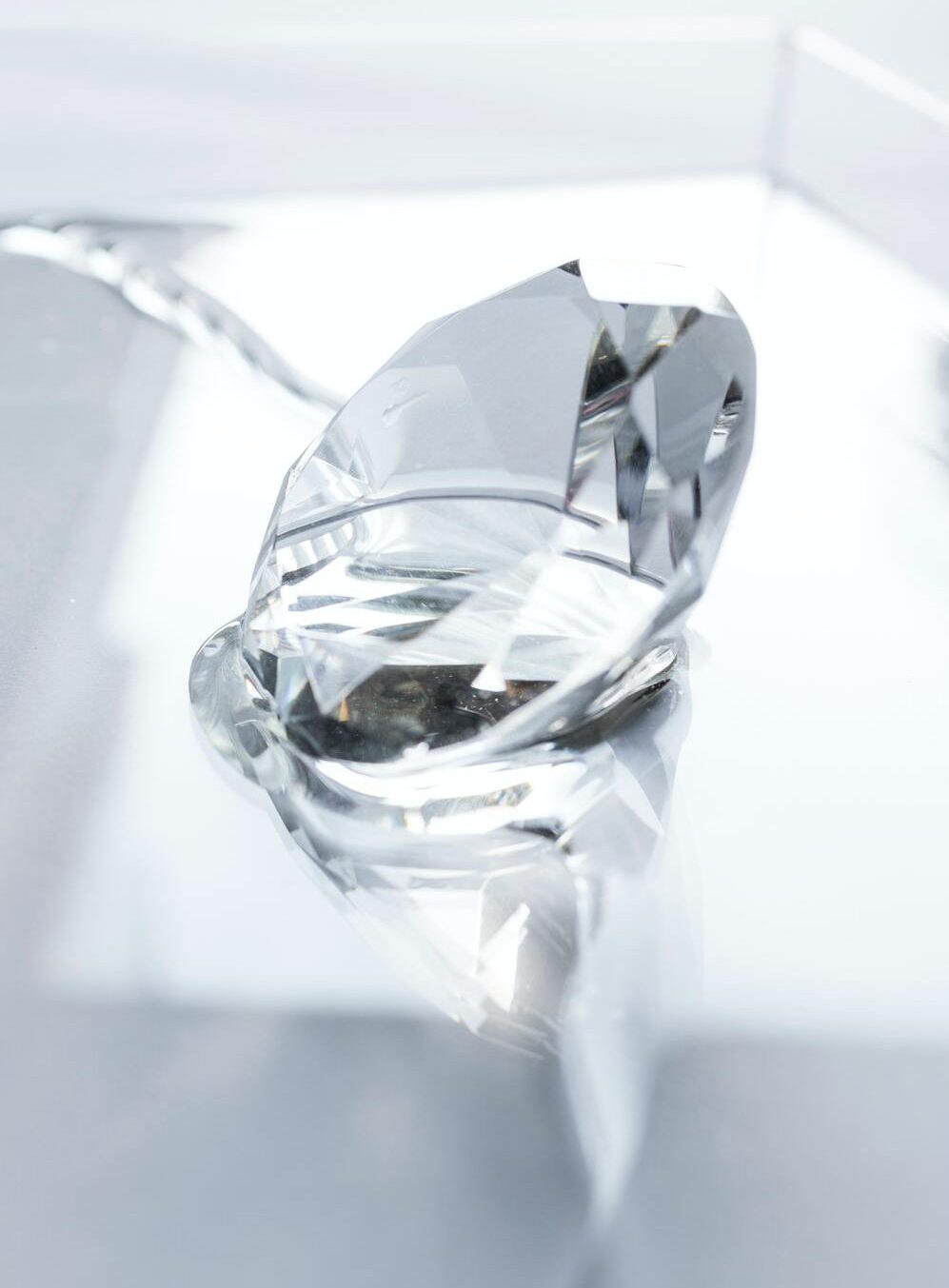Originating from the Greek word “adamas”, the name diamond means “invincible”. A mineral composed of 99,95% carbon, the diamond is the hardest element on Earth. Formed at extreme underground depths under high pressure and temperatures, this gemstone is over a billion years old.
What is a diamond ?
The 4Cs of diamond
Like every human being, each diamond is unique, with its own characteristics. In 1953, the GIA (Gemological Institute of America) established the 4Cs diamond grading system based on the four following criteria: cut, color, clarity, and carat. Today, this system is an internationally recognized standard for deciding the quality of a diamond.

Cut
As the most important criterion for the beauty and brilliance of a diamond, the cut maximizes its ability to interact with light. The cut is defined by the proportions, polish, and symmetry of the stone.
Proportions: the relationship between the surface, shape, and angles of each facet.
Polish: relating to the finishing and final polishing of the facets.
Symmetry: how the different facets align with each other and are positioned.
When analyzing the cut of a diamond, the gemologist assigns a grade to each of these criteria: proportions, polish, and symmetry.
The cut scale developed by the GIA is as follows:
Excellent: the diamond reflects the totality of light entering it, creating maximum fire and scintillation.
Very good: almost all the light is reflected by the diamond, generating a lot of scintillation and fire.
Good: the diamond reflects much of the light entering it, producing good overall brilliance.
Fair: a large proportion of the light entering the diamond escapes from its extremities generating little brilliance.
Poor: almost all of the light entering the diamond escapes from its extremities. The stone is dull, extinguished, lifeless.
In order to reflect the maximum sparkle and fire, our diamonds are cut by highly skilled craftsmen, with both technical and artistic expertise.
Only diamonds with a “very good” or “excellent” cut are retained in our selection process.
Color
The second most important criterion of a diamond’s beauty is color: the natural hue of a white diamond, ranging from exceptional white (colorless) to light yellow.
The GIA has developed a color scale ranging from D (exceptional white) to Z (light yellow) in alphabetical order. The less color, the greater the diamond’s value.
At the House of Diamonds, we only select colorless or almost colorless diamonds that emit no or very little fluorescence.
Carat
Carat is the unit of measurement for the weight of a diamond. The word “carat” originates from the carob seed, which was used as the standard for weighing precious stones in Antiquity.
One carat is equivalent to 0.2 grams.
Although it is the most important criterion for the price of a diamond, the weight does not influence its quality. As such, two diamonds of identical weight can have a totally different value depending on their cut, color, and clarity.
Clarity
The majority of diamonds have natural imperfections called inclusions. The number of inclusions, their size and location determine the clarity of a diamond.
Clarity is analyzed under 10x magnification and graded by the GIA on a scale from FL (no internal inclusions and no external blemishes) to I3 (inclusions very easily visible to the naked eye).
At the House of Diamonds, we select at the very minimum diamonds that have no inclusions or blemishes visible to the naked eye.
The clarity scale developed by
the GIA is as follows :
FL (flawless) :
no internal inclusions nor external blemishes are visible.
IF (internally flawless) :
no internal inclusions are visible.
VVS1-VVS2 (very very small inclusions) :
the diamond has miniscule inclusions that are very difficult to see under magnification. Their location, size and number determine the difference between VVS1 and VVS2.
VS1-VS2 (very small inclusions) :
the diamond has very small inclusions, difficult to see under magnification. Their location, size and number determine the difference between VS1 and VS2.
SI1-SI2 (small inclusions) :
the diamond has small inclusions that are easy to see under magnification. Their location, size and number determine the difference between SI1 and SI2.
I1-I2-I3 : (included) :
the diamond has inclusions visible to the naked eye. Their location, size and number determine the difference between I1, I2 and I3.


